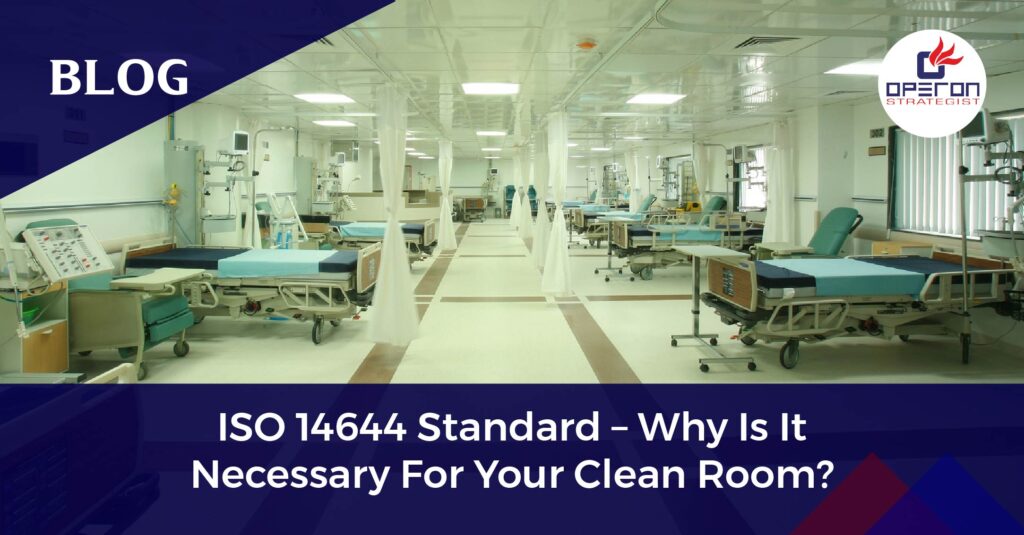So you are looking for complying ISO 14644 standard for clean room!
If you are into the medical industry, or if your work nature is into the commercial, medical or industrial industry, then you should know about the Clean Room, where every medical industry must work under “clean” conditions, as an extremely small dust particle or off-gassing can make the entire batch of medicines unusable. A clean room is a very important part of every medical manufacturing process. A company also needs a dust-free clean room to conduct tests and accelerate the innovation process before manufacturing begins. The main purpose of cleanroom is for product yield and improving quality control in an environment by the limited presence of sub-micron particles within the clean room, and also provides the employee\’s safety.
Clean Room Design Consultant For Medical Devices
As a Clean Room Design consultant, we provide expertise clean room design solutions to medical device manufacturers.
What is a Clean room?
‘A room in which the concentration of airborne particles is controlled, and which is constructed and used in a manner to minimize the introduction, generation, and retention of particles inside the room and in which other relevant parameters, eg temperature, humidity, and pressure are controlled as necessary.’
— ISO 14644-1
Contamination in a clean room can represent the risk to specialized procedures and production activities, and also the people associated with this procedure. Numerous organizations have discovered that the unguarded growth of contamination can bring about product damage, yield decrease, and even product recalls. So, nowadays medical companies are protecting themselves from the unsafe impacts of contamination.
In a clean room, the unwanted microorganisms are always carried by humans. As indicated by ongoing investigations, there are more than 200 types of various microscopic organisms that are related with people and can be found in the digestion tracts, eyes, hair, nose, mouth, and skin. This implies that humans are not just the major source of contamination; they are likewise the agent for transferring contaminants to different areas that could represent damage to the product. These bacteria can be spread by sneezing, coughing and by just touching something. To avoid this contamination there is clean room clothing which will be discussed further.
Clean room Manufacturing as per ISO 14644 standard
How clean the room is measured and how can it be determined? We will explain to you in this blog article. Clean room are controlled areas that are classified by how clean the air is, according to the quantity and size of particles per volume of air.
Clean room design and development requires tight controls over contamination, air flow rate, pressure, temperature, and humidity. To manufacture the clean room ISO class system provides an industry-wide standard that is ISO 14644 it’s the clean room standard for cleanliness and particles counts.
ISO 14644-1:2015 specifies the classification of air cleanliness in terms of concentration of airborne particles in clean rooms and clean zones; and separative devices as defined in ISO 14644‑7.
ISO 14644 is composed of:
Part 1: Classification of air cleanliness by particle concentration
Part 2: Monitoring to provide evidence of cleanroom performance related to air cleanliness by particle concentration
Part 3: Test methods
Part 4: Design, construction, and start-up
Part 5: Operations
Part 7: Separative devices (clean air hoods, gloveboxes, isolators and mini-environments)
Part 8: Classification of air cleanliness by chemical concentration (ACC)
Part 9: Classification of surface cleanliness by particle concentration
Part 10: Classification of surface cleanliness by chemical concentration
Here are some significant changes introduced in ISO 14644-1 from different perspectives:
- ISO Classification Table
- Minimum Required Number of Sample Locations
- UCL 95%
- Equipment Calibration
- Ultra and Micro Descriptors
- Sequential Sampling
- Amendments to the method of evaluation of data collected from airborne particle counting
- The basic ISO cleanliness classes 1 to 9 do not fundamentally change, but the classification process requires the adoption of a revised protocol for every clean room or clean air device
- The revised standards also include updated references to normative and supporting standards
How is ISO 14644-1:2015 different from ISO 14644-1:1999
What really makes it different? Is been mentioned in the following table for the ones who are still unaware. Well, let’s consider this too, and see some points in the below image:
| ISO 14644-1:2015 | ISO 14644-1:1999 | |
| UCL 95% | If the number of sampling locations was between 1 and 10, standard deviation and UCL 95% was calculated and it is this figure that must be within specification for the specific class of clean room. | Completely removed the standard deviation and UCL 95%. The clean room has met its classification requirements if the average particle concentrations at each sample location are within specification. |
| Equipment Calibration | The instrument shall have a valid calibration certificate, the frequency and method of calibration should be based on current accepted practice. | The particle counter shall have a valid calibration certificate: the frequency and method of calibration should be based upon current accepted practice as specified in ISO 21501-4 |
| Ultra and Micro(u, M)Descriptors | Smaller than 0.1 microns defined as u, larger than 0.5 microns defined as M. | Smaller than 0.1-micron particles will no longer exist in ISO 14644-1. This issue will address in ISO 14644-12 |
Some General Questions on ISO 14644-1: 2015
Here are some questionnaires that are generally asked. Well, surely many questions and doubts held by businesses interacting with ISO 14644-1:2015 standards. I have answered some questions which are put up.
- What is this ISO 14644-1:2015 standard about?
This standard is all about improving quality control in an environment by the limited presence of sub-micron particles within the clean room. It gives guidelines related to air cleanliness, looking specifically at particle concentration.
- The ISO 14644-1:2015 standard is applicable for?
- Clean room facility users, testers, consultants
- Vendors of cleanroom technology components such as air filters, safety cabinets
- Healthcare operators/hospitals/clinics
- Healthcare design and build/research and development
- Healthcare manufacturing, including pharmaceutical and medical devices
- Life sciences research and microelectronics and biomedical technology
- Micro-mechanical industries
- Nanotechnology industries
- Optics
- Aerospace
- Why is this ISO 14644-1:2015 standard necessary?
It focuses on the definition of air cleanliness by particle number concentration and gives the updated classification procedures specified to achieve this.
This latest revision reflects recent advances in airborne particle counting science and the improved statistical rigour of cleanliness classifications for clean rooms and clean devices.
- Changes in the ISO 14644-1:2015 from the previous?
The 2015 revision takes into account improved industry knowledge and a reconsideration of the levels of statistical confidence that can be practically achieved during clean room and clear air device classification. Changes include:
- Amendments to the method of evaluation of data collected from airborne particle counting
- The basic ISO cleanliness classes 1 to 9 do not fundamentally change, but the classification process requires the adoption of a revised protocol for every clean room or clean air device
- The revised standards also include updated references to normative and supporting standards
- adminhttps://operonstrategist.com/author/admin-2/
- adminhttps://operonstrategist.com/author/admin-2/
- adminhttps://operonstrategist.com/author/admin-2/
- adminhttps://operonstrategist.com/author/admin-2/



